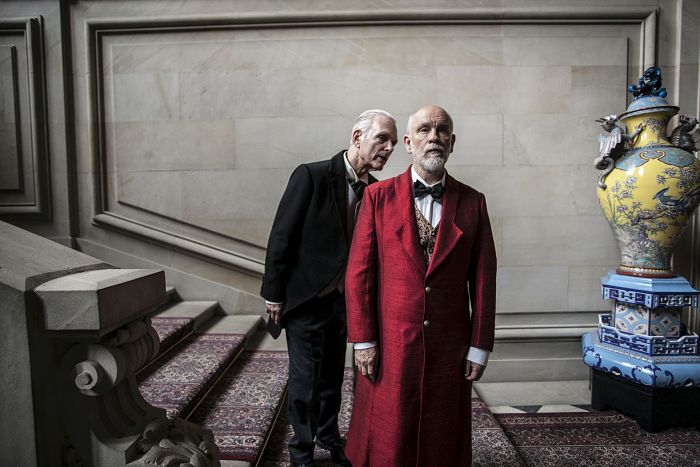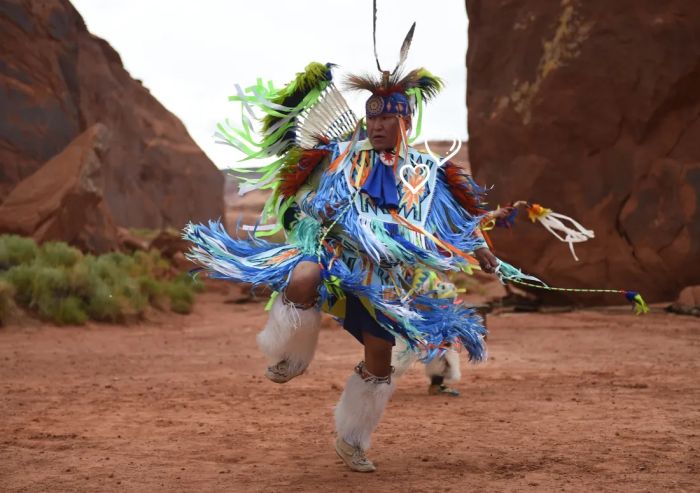Lech Majewski's Valley of the Gods has recently appeared on the big screens as a kind of freak, whose natural environment should be studio cinemas and niche festivals. However, it did not happen - we can see her between one and the other action-taker in the multiplex, and from the posters we will be looked at by the well-known and popular face of John Malkovich. So there is no excuse not to see - but is it really worth it?
At first glance, the production looks very encouraging – a great actor in one of the main roles, a recognized director with extensive achievements, and an interesting combination of the work of native artists with foreign artists and landscapes. The abbreviation of the plot also sounds intriguing – three stories in one, philosophical considerations, and the whole story is lined with the mythology of the Navajo people. Everything is correct on paper, so let’s sit in the armchair and get carried away!
Let’s feast our ears, let us enjoy our eyes!
Undoubtedly, the audiovisual side is a huge positive of the Valley of the Gods . The opening scene already shows us the beauty of America’s rocky wastelands inhabited by the Navajo people, both through picturesque, static frames and through a long, wide shot from a drone. Later it is not a bit worse – the camera works persistently, creating interesting compositions even in scenes inside the rooms or during dialogues. This aspect of the film would even defend itself as a standalone show, regardless of the story being told.
The same is true of music, which in every respect equals a visual masterpiece, which should not come as a surprise in the case of such an experienced composer as Jan AP Kaczmarek. Rather, it is not the kind of soundtrack that we will hum after leaving the cinema – it remains in a climate suited to the whole work and efficiently completes it, moving appropriately between the sublime and subdued resonance with the emotions of the viewer.

Source: Galapagos
All that glitters is not gold
Unfortunately – at least for Majewski’s work – the film is not a painting, so it is not enough to watch it well. The heroes or the plot are equally important … and here the stairs begin. The three narratives focus on three male heroes whose fates are intertwined in a way. The story of the writer-marketer John Ecas undergoing a crisis in his life is at the center of the link. The two other – inspired by Navajo mythology, the adventures of the Gray Horse, who becomes the father of an unusual rock child, and the double life of an eccentric billionaire, Wes Tauros – overlap with it.
The whole thing is quite pleasant to watch thanks to the skillfully dosed tension and the creative structure of the story, which plays with the perspective from which the viewers get to know it. It is by no means a complete chaff, so you don’t have to worry about boredom or irritation. The problem, however, lies in the surprising vagueness of the main characters and their experiences. We will not identify ourselves with Tauros, with Ecas, nor with any of the Indians, nor will we become attached to them enough to support them at least authentically, or even await the finals with interest. They are all relatively one-dimensional, and at the same time not very nice – the young writer is lost, broken by the loss of his wife and overwhelmed with bitter anger towards the world, the rich man created by Malkovich is a blasé, enigmatic Croesus, devoid of all feelings except grief for his dead family, a Gray Horse is an aggressive frustration with an alcohol problem. Indeed, a cute bunch!
The role of female figures in all this is quite specific, as they are presented like one man (or maybe one woman?) As … statuesque. It is impossible to use a more vivid term here – they are all very beautiful, as well as important and inspiring for male heroes, but at the same time they remain haughty, insensitive, distant, attainable only in dreams or longings. Most of them function in the film only in fantasies and flashbacks, and in the case of the Tauros wife, even as a completely literal statue.
“What the poet meant” by deciding on such depiction and the distribution of forces between the sexes, I cannot clearly define, because the narrative itself does not try to comment on it directly. I only hope that it was something deeper than the already worn out perception of men as active and dynamic, but full of flaws and weaknesses, and women as passive, but closer to the ideal and able to change the representatives of the second sex for the better.

Why not reinvent the wheel?
After leaving the cinema room, I had the impression that this was the thought of Lech Majewski at work. The Valley of the Gods raises many issues – psychological, social, even cultural. But just speaking on a topic is no art, the trick is to say something new, to offer an innovative perspective. Unfortunately, we will hardly see that here.
There are dozens of works already showing and discussing issues such as the conflict of nature and tradition with voracious, ideless capitalism, unexpected limitations resulting from high social position, and healthy and pathological ways of dealing with loss or burnout. And most of these other cultural creations do it better – if not, at least sooner. Repeating the same just as much does nothing. We have seen many rich people pretending to be poor for the sake of anonymity. Just like broken-in-life artists falling into a creative amok and honest representatives of indigenous people dispossessed by ruthless corporations.
I am not able to find any justification for reaching for content that is so banal and hackneyed for today’s audience, if we have nothing to add to them and we do not offer a fresh perspective. I would also be inclined to forgive a simple blockbuster for trying to add depth in this way. Nevertheless, in the case of a cinema so technically refined, bordering on the atmosphere of an arthouse and clearly trying to brand its own visionary approach, such a procedure just hurts. The king is naked.
Even such a tempting use of Navajo mythology turns out to be quite a disappointment, because the common myth of an ancestor’s coexistence with the earth, ending with the begetting of an unusual child, is basically taken alive from mythical stories and depicted without any significant shifts or reinterpretations.
In fact, the only interesting thread showing the original view of reality for me was the concept of human talents and passions as a prison in which we voluntarily lock ourselves for eternity in the final part of the film. It made me reflect somehow and for that I can be grateful to the director. The problem is that it is a faint light in an otherwise dark tunnel, and the subject is only suggested and outlined with a few quick strokes. It is not central to any of the stories and does not have time to sound properly. Ultimately, therefore, it can be found in the philosophical layer of the Valley of the Godssome added value, but it is far too little for an image of this kind. If you are looking for a deep work that turns the worldview upside down, well … keep looking!
We invite you to watch the movie Valley of the Gods to the Cinema City cinema network all over the country!

